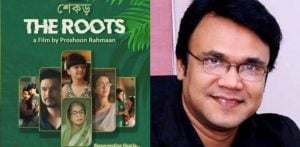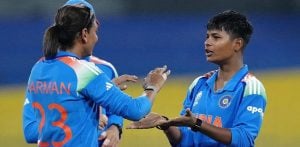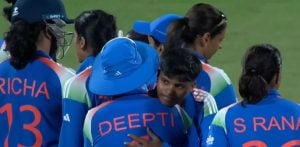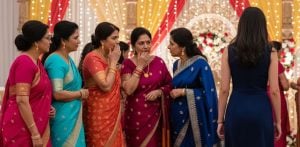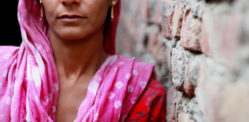"Sex in reality is way different."
Sex and sexuality remain deeply taboo subjects across many South Asian (Desi) communities, both in South Asia and among British Asians. Therefore, Desi sex education, if done right, can help.
Open discussion is rare, with many Desi parents finding it hard to engage in subjects like relationships, consent, or sexual health with their teenage children.
This silence surrounding sexuality creates a vacuum that young people inevitably fill from alternative, often problematic sources.
Adolescents and young adults turn to pornography, whispered conversations with peers, and dubious online resources to understand their developing bodies and desires.
This exploration is not merely about what happens behind closed doors but reflects broader cultural tensions between traditional values and the information-saturated world navigated by Desi youth.
Research demonstrates a substantial gap between what young South Asians need to know about sexual health and what they actually learn.
Therefore, the consequences of not getting the right kind of sex education can extend into adult relationships, mental wellbeing, and physical health.
In India, for example, 88% of male and 58% of female university students in Mumbai reported never receiving sex education from their parents, instead relying on books, magazines, pornography, and social media for information.
School curricula are often limited to topics like biological sex education, contraception, menstrual hygiene, leaving critical gaps around consent, healthy relationships, and sexual orientation.
We take a look at how the lack of Desi sex education is impacting youth and why it needs serious attention.
The Cultural Silence

Pre-colonial India was far more accepting and open about sexuality and gender diversity.
Ancient texts like the Kama Sutra discussed sexual pleasure, desire, and technique without moral judgement, recognising sex as a natural and important part of life.
Sexuality was linked not only to physical pleasure but also to spiritual fulfilment, and sexual knowledge was considered a legitimate and respected area of expertise.
Victorian colonial influence imposed legal, social, and moral restrictions that stigmatised sexual expression, non-binary identities, and same-sex relationships, a legacy that still shapes attitudes in India today.
Therefore, this legacy has prevailed through generations, seeping into Desi households, making discussions around sex awkward and difficult and mostly turning into a cultural silence.
This silence also stems from complex sociocultural factors that position sexual knowledge as inappropriate, especially before marriage.
The discomfort permeates family dynamics across generations, creating environments where important conversations simply cannot take place.
Jagdev*, a 28-year-old British Indian, explains
“My family were a definite ‘no go’ area for stuff to do with sex. There was no way I could talk to my dad and mum about it, I would’ve been beaten proper.
“For me, most of my learning was from books, films, friends, girlfriends and I guess porn. Before 18, you could say I really didn’t know much about sex at all.”
This cultural reticence creates familiar scenarios in South Asian households, the swift channel change when intimate scenes appear on television, the awkward silences when questions arise, and the diversionary tactics when curious children ask about reproduction.
As sex educator Sangeeta Pillai notes:
“If you were watching TV with your parents and there was a sex scene or even a hot kissing scene that came on, your parents would immediately change the channel.
“As if what was being shown on screen was indescribably ‘dirty’ and needed to be obliterated.”
The consequences of this avoidance stretch beyond momentary discomfort. It has led to young Desi people growing up and having to learn about sex and relationships ‘in secret’.
Research from the All India Educational and Vocational Guidance Association found that 54 per cent of male students and 42 per cent of female students didn’t have adequate knowledge regarding matters of sex.
This knowledge gap leaves young people vulnerable and ill-equipped to navigate relationships and their own sexuality.
While many parents avoid discussions about sexuality, studies indicate that youth themselves recognise the importance of proper sexual education.
According to research published in PLOS ONE, there exists a “substantial gap between the proportion of youth who perceived sex education to be important and those who actually received it, revealing considerable unmet need for FLE [Family Life Education].”
This unmet need exists despite evidence that youth who received formal family life education were more aware of reproductive health issues than those who did not.
In 2025, a student from Kolkata in India created a petition for sex education to be compulsory in schools in India, saying:
“As I have been growing up, I have felt that the lack of formal sex education in India deeply effects the equation between men and women – be it in the private space at home or in the public sphere like a common workplace.”
He adds:
“At the level of secondary school, sex education should be made compulsory. Teenagers must be taught how to approach any discussion about sex sensitively. Myths should be broken and misconceptions should be cleared.
The taboo on sex is the root cause of degeneracy. If that taboo is broken, it may protect women as well as create responsible men.”
Hence, demonstrating the lack of sex education that prevails in countries like India and Desi households in the 21st century.
Pornography: The Default Sex Educator

In the absence of formal sex education, pornography has become a primary source of information about sex for many South Asian youth.
This problematic education comes with distorted views of consent, pleasure, and realistic expectations.
Nikhil Patel, aged 21, says:
“Porn is so readily available now and in so many different forms, it is most likely the only way a lot of young guys learn about sex.
“Some of my friends just watched porn from a young age to learn about sex and went off to have to do it, thinking that’s the way it was. But we all found out it’s not the case. Sex in reality is way different.”
This highlights how common porn has become a pathway to early sexual knowledge and it is often consumed in secrecy, without context or critical discussion.
In the digital age, pornographic content is often just a few taps away, providing graphic but misleading information about human sexuality to impressionable minds.
The proliferation of Desi sex and porn content further complicates matters.
Websites like those reviewed by aggregator sites boast about offering “free Indian porn” featuring “desi girls, Hindi aunties, and Tamil bhabhi’s having sex.”
These sites specifically market themselves as catering to viewers who want to see people who look like them, creating a false sense of cultural relevance that may make the content seem more educational than it is.
For many young Desi men, pornography establishes unrealistic expectations about sexual performance, women’s bodies, and what constitutes normal sexual behaviour.
Desi women’s porn consumption is rising, but stigma persists. Many watch discreetly on smartphones, often preferring content centred on female pleasure. Feelings of guilt, secrecy, and fear of judgment are widespread.
Some women report porn helps them explore sexuality, but others experience dependence, low self-esteem, or relationship strain. Cultural expectations and gender roles make open discussion and seeking help especially difficult for women.
Pornography also has had a major impact on young men and women in terms of masturbation and learning about the healthy use of sex toys. For men, especially, addiction is a known issue interconnected with excessive masturbation.
With pornography playing a significant educational role, there is no doubt that it leaves critical gaps in understanding consent, mutual pleasure, and healthy relationships.
The Disconnect Between Fantasy and Reality

The portrayal of women in pornography aimed at South Asian audiences often reinforces problematic stereotypes and power dynamics.
Sites commonly advertise content featuring distorted inter-family sexual relationships and abuse, which further fuels misconceptions in young minds.
Karan, aged 27, says:
“There are some crazy, shocking and abnormal relationship portrayals in porn which can lead to a lot of misleading signals for both men and women.
“Indian websites are obsessed with mother, sister, step-mother, maid, bhabi content, which I’ve found alarming.
“Also, there are tons of forums and social media posts which upload images and videos, consented or not, of random Desi people having sex.”
These narratives not only misrepresent healthy sexual relationships but also often glorify power imbalances and even non-consensual scenarios.
For young women, exposure to such content can create anxiety and shame about their bodies and sexual responses, while young men may develop distorted views about what women want or enjoy.
Unrealistic Portrayals
- Bodies: Porn actors typically represent a narrow, idealised standard, hairless, surgically enhanced, and physically “perfect”, which does not reflect real bodies. Young viewers internalise these standards, leading to dissatisfaction with their own appearance and anxiety about their desirability.
- Performance: Porn showcases exaggerated, often physically impossible acts, and presents sex as a performance rather than a mutual, communicative act. This can create pressure to “perform” rather than connect, and cause anxiety or disappointment when real-life experiences differ.
- Consent: Porn rarely models healthy communication or enthusiastic consent. Instead, it often blurs or ignores boundaries, sometimes depicting aggression or coercion as normal or desirable. This distorts young viewers’ understanding of what consent looks like in real relationships.
Harmful Myths Perpetuated
- All women are always sexually available and enjoy everything depicted.
- “Real” sex is rough, loud, and acrobatic, with little focus on emotional connection or mutual pleasure.
- Men must be dominant, insatiable, and physically impressive to be desirable.
- Bodies must look a certain way to be attractive or “normal”.
- Porn is a legitimate or healthy way to learn about sex and relationships.
These myths fuel insecurity, body image issues, and unrealistic expectations for both young men and women, often leading to disappointment and distress in real-life intimacy.
Meena, aged 25, says:
“I watched porn for the first time with my boyfriend, and it made me feel my body looked nothing like the women in the films.”
“I also felt I was not doing it right when it came to sex.”
“It made me feel very inadequate despite my boyfriend’s assurances that it did not matter.”
Hamid, aged 23, says:
“I was in a relationship where the girl asked me if I wanted her to be a filthy s***t like a porn star. Maybe to another guy it would be what he wanted, but for me, it was not.”
“I think social media and phones have massively changed what you see in porn and sexual content, which is leading to young Desi people getting influenced by what they see.”
Peers and Whispered Knowledge

When formal education and family guidance are absent, peers become crucial sources of sexual information, often transmitting misinformation in the process.
For many young South Asians, hushed conversations during lunch breaks, sleepovers, or via messaging apps form the foundation of their sexual knowledge.
These conversations can frequently reinforce sexual cultural taboos while failing to provide accurate information about sexual health, consent, or mutual pleasure. For example, highlighting the different sexual expectations put on girls versus boys, e.g. being a virgin or not.
The problem extends beyond simple misinformation.
Peer discussions often revolve around experiences or ‘claimed’ experiences that may not be representative or healthy.
Young people, especially boys, might exaggerate or fabricate sexual encounters to gain social standing, creating unrealistic expectations for their less experienced peers.
Fear of not ‘knowing what to do’ when it comes to sex among young Desi men to avoid ridicule is replaced by stories of sexual encounters, which may not entirely represent the actuality of events.
Meanwhile, genuine questions about biology, sexual health, and emotional aspects of intimacy may go unanswered or receive incorrect responses.
Jasbir Gill*, aged 27, says:
“When we were at secondary school, in the playground, the Asian guys used to hang out with each other and share laughs and jokes about girls and sex.
“There was this one guy who used to tell us he did it with a few girls. And for most of us, this was uncharted territory, so believing him, we would ask him stuff in a roundabout way.
“He would tell us his sexual exploits and what it felt like touching boobs and the rest of a girl.
“Thinking back, I’m not sure if his stories were real or not now…”
Hence, friends are rarely better informed, often just repeating what they’ve seen in the media or heard from others, compounding the cycle of misinformation.
Young Desi women in stricter regimes also let their curious minds related to sex get explored by even ‘role play’ among peers to act out kissing or touching, especially in hostels or boarding schools.
Shenaz Ahmed*, aged 39, recalls:
“When we were at boarding school in my teenage years, in Pakistan, lots of girls used to tease each other about being with a man, and often would play around pretending to be one. So, girls did try out kissing and things like that with each other.
“Sexual curiosity, although natural at that age, was frowned upon, giving very little opportunity to learn about sex.
“And then suddenly you are married with very little idea of what to expect or do.”
Reinforcing the need for corrective Desi sex education for both boys and girls.
Common myths spread among peers include:
- Contraception myths: Misinformation about contraception, STIs, and pregnancy risks.
- Gendered double standards: Boys are praised for sexual experience, girls are shamed
- First Time Sex: Myths about having sex for the ‘first time’, losing virginity, and what is “normal.”
Peer conversations can reinforce shame, stigma, and anxiety, especially for those who feel they don’t “fit in” or are not ready for sexual activity.
For LGBTQ+ youth, the lack of accurate, inclusive information can be even more isolating, pushing them further towards unreliable online spaces.
Internet and Social Media

The internet and online sources have become increasingly important in young people’s quest for sexual knowledge. The digital landscape offers both opportunities and pitfalls for Desi sex education.
The Smile Foundation India, highlighting the double-edged nature of online information, warns:
“Everyone is exposed to a lot of information on the internet. Teenagers can access information about sex through dubious sources. This information can give them wrong ideas about sex, sexual health, and sexual wellness.”
For many young Desis, the internet provides an anonymous way to ask questions they could never voice at home or school. However, the quality of information varies dramatically.
Sailesh Patel, aged 26, says:
“I learned everything from the internet. I was too shy and scared to ask anyone. My friends were not very approachable, and family was not an option.
“Porn became my first addiction but then I began to read forums and understand what real sexual experiences were like for others. This helped me.
“Sex itself is not different, but everyone is different.”
“I think how sexual content is drummed into us, especially online, is where the problem lies. A lot of young people assume what’s posted on social media is true. But it’s not always the case, and influencers have a big role in this.”
While some may find medically accurate resources from reputable organisations, others encounter misleading content, pornography, or exploitative material presented as educational.
With traditional channels of information often restricted, many young South Asians turn to social media and online forums for information. While these platforms can provide community support and sometimes accurate information, they also carry risks of misinformation and exploitation.
“TeenBook,” India’s first teen-only podcast, attempts to address this gap by discussing “several teen issues from exam anxiety, pimples to crushes, period, body hair, peer pressure, bullying and fashion advice” in a youth-friendly format.
The podcast notably includes discussions about sex and sexuality by bringing in experts who can provide scientifically accurate information while also addressing cultural context.
However, not all online resources are so responsible. Anonymous forums can spread myths and misinformation, while predatory individuals may target vulnerable young people seeking answers about their bodies or relationships.
Social media is also a breeding ground for creating strong views which has an impact on healthy sexual relationships. In 2025, UK schools report a surge in misogyny, with boys mimicking influencers like Andrew Tate.
Some refuse to speak to female teachers or use sexist language, directly linked to Tate’s content and viral online trends. Teachers say boys as young as 10 are copying Tate’s attitudes, seeing women as property or inferior.
Therefore, social media and porn together can reinforce these harmful ideas, making sexism and disrespect more visible in places like classrooms.
Conversely, social media platforms and YouTube have emerged as significant sources of sexual information for young South Asians.
Many young Desi people are learning about sex from ‘experts on YouTube’ and influencers on platforms like TikTok and Instagram. Indicating video serves as an accessible alternative to formal sex education for many young people.
However, algorithms that prioritise engagement over accuracy can lead viewers down problematic paths, from medically questionable advice to increasingly explicit content.
Without the critical thinking skills to evaluate online information, skills that would typically be developed through a comprehensive education, young people may struggle to distinguish fact from fiction.
Tina Khan, aged 22, says:
“I’ve come across a lot of content on the internet and social media that can be very biased and not accurate. This raises questions about what is true or not, or if it applies to you or not.
“Yes there lots of medical websites, but young women like myself want to know what other women like me go through, when it comes to sex and relationships.”
Consequences of Inadequate Sex Education
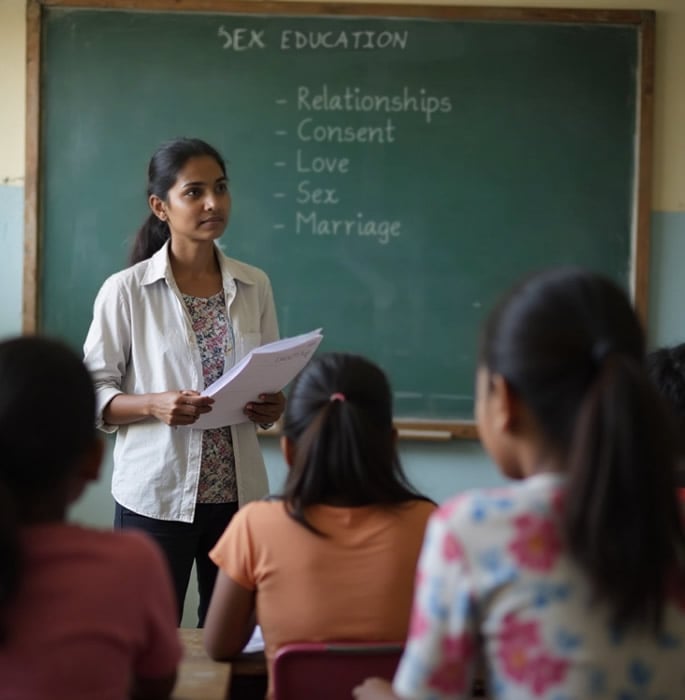
The ramifications of learning about sex through pornography, peers, and poor advice extend far beyond adolescence, affecting adult relationships, mental health, and sexual wellbeing.
The silence around sexuality within South Asian families creates a profound sense of shame that can persist into adulthood.
As one Reddit user poignantly expressed:
“Half the marriages here in India are just loveless contracts of mediocrity, in which people just rot unsatisfied.
I know of so many indian women whose husbands have never satisfied them romantically and emotionally and sexually, and I know of a lot of men too who don’t find the kind of romantic and sexual satisfaction they’re looking for in their marriage.”
This perspective reveals the long-term emotional toll of inadequate sexual education. Without understanding the emotional components of intimacy, clear communication about desires, and mutual respect, many South Asians enter marriages ill-equipped for physical and emotional connection.
The combination of pornography, peer misinformation, and cultural silence often reinforces problematic gender dynamics.
Young women learn to view their bodies with shame while being expected to satisfy partners they may not understand how to communicate with.
Meanwhile, young men develop unrealistic expectations about female sexuality while lacking an understanding of consent and mutual pleasure.
Relationship expert Vandana Ganpathy says:
“An average woman needs 45 minutes of sensual intensification to reach an orgasm.”
Yet without proper education, many young people remain unaware of basic aspects of female sexual response, leading to unsatisfying experiences and potential relationship strain.
Beyond emotional consequences, inadequate sex education poses tangible health risks. Young people without accurate information about contraception, sexually transmitted infections, and reproductive health are more vulnerable to unplanned pregnancies and infections.
Hope for Improvement

Despite significant challenges, attitudes toward sex education are slowly changing within South Asian communities. Both within the subcontinent and diaspora communities, educators, parents, and young people themselves are finding ways to address the knowledge gap.
New digital platforms, including the use of AI, are emerging to provide accurate, culturally sensitive information about sexuality to South Asian youth.
Vithika Yadav, TeenBook podcast creator, says:
“Our children are indeed growing in a world where they are exposed to far more information than we ever were, and it is very important to talk to our children about issues that are important to them or perhaps bother them.”
By adopting a youth-friendly tone and bringing in experts who can explain sexual interactions from a scientific standpoint, such initiatives provide an alternative to pornography and peer misinformation.
This perspective challenges the notion that sexual conservatism is inherently “traditional” in South Asian cultures. Instead, it suggests that contemporary taboos represent a relatively recent development that diverges from historical approaches to sexuality within the region.
Sex educator Sangeeta Pillai says:
“I believe that we can start unlearning some of these damaging beliefs by going back to our own South Asian culture and history.”
“In fact, the key message in the Kama Sutra is about how important it is to cultivate your sexual skills because that was considered an important life skill, to become a cosmopolitan human being.”
This preference creates both challenges and opportunities. As British Pakistani single mother Alina explains regarding future conversations with her son:
“Honestly, it makes me feel queasy, I don’t know how or what I’m going to say to Imran when it’s time. Schools do plenty, mostly, but as a parent, I’m going to have to; it’s a must.
“I don’t want him learning from the wrong places and learning the wrong things.”
Alina’s determination to overcome her discomfort reflects a growing recognition among some South Asian parents that their silence may push children toward problematic sources of information.
Initiatives that help parents develop comfort discussing sexuality with their children could therefore play a crucial role in addressing the knowledge gap.
Newer generations of South Asian parents need to break the barriers of past generations and provide support to their children where it matters most, i..e not just the materialistic things but something to help nurture their future relationships and sexual inhibitions.
The reality of where young South Asians learn about sex, primarily through pornography, peers, and poor online advice, reveals a significant failure of both families and educational systems.
As technology makes explicit content increasingly accessible while cultural taboos persist, Desi youth find themselves navigating a complex landscape with inadequate guidance.
The consequences of this education gap extend far beyond adolescence, affecting adult relationships, mental health, and physical wellbeing.
However, emerging digital platforms, changing parental attitudes, and efforts to reclaim South Asia’s historical relationship with sexuality offer potential paths forward.
As sex coach Pallavi Barnwal reflects on her experience working with Indian couples:
“Many individuals had parents who would scold them for touching their genitals at a young age, which caused them to feel disconnected from that part of themselves, even as an adult.
During my assessment sessions, I ask the sexless spouse two questions: What do you think love is, and what do you think sex is? Not surprisingly, the associations to love come as platonic, togetherness, and parental affection, and associations to sex come as dirty, forceful, and shameful.”
Breaking this cycle requires comprehensive approaches that address both formal education and cultural attitudes.
Until then, young South Asians will continue piecing together their understanding of sexuality from problematic sources, perpetuating cycles of misinformation, shame, and disconnection that affect not just individuals but entire communities.














